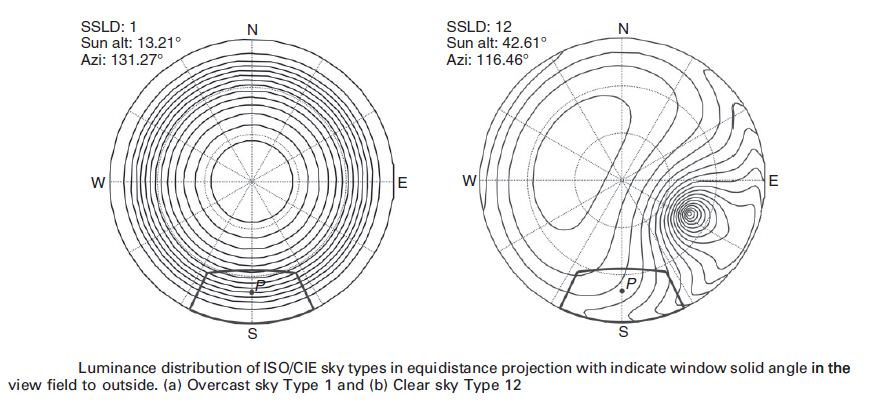Luminance patterns on standard sky types
Due to changing cloud cover, the outdoor sky luminous transmittance and atmospheric turbidity in natural conditions are causing also the redistribution of sky luminance patterns, as well as changes to the exterior sky illuminance levels. In consequence, an almost infinite multitude of sky luminance patterns that in nature create different daylight illuminance in urban regions will result in unique sunlight and skylight conditions on streets and house fronts as well as through windows due to their orientation.
There is insufficient current knowledge on the sky luminance patterns under ISO/CIE standard sky types in absolute luminance physical units in cd.m-2 and the resulting horizontal skylight illuminance in lux at the ground level. There are two main approaches to standardize the design and evaluation of indoor visual environment. The first is based on the determination of the minimum requirements respecting human health and visibility needs in all activities while the second emphasizes the behaviour and comfort of occupants in buildings considering year¬ around natural changes of physical quantities like light, temperature, and noise and energy consumption.
As all these recent sky standards represented sky luminance states only in relative terms, i.e. compared to zenith luminance, thus such conditions occur under extreme overcast and clear cases. The work of the CIE daylight expert team decided to complete a set of intermediate sky luminance patterns to be determined also in absolute luminance and illuminance physical units, i.e. cd.m-2 and lx. A Slovak – U.S.A. project introduced a possible solution accepted later as CIE in 2003 and ISO in 2004 standards for general sky types. The 15 rather homogeneous sky types included a set of sky patterns from overcast to partly cloudy and clear were defined.
The new current standardization basis for daylight evaluation and window design criteria stimulate the study of methodology principles that historically were based on the overcast type of sky luminance pattern avoiding yearly availability of sky illuminance levels. New trends to base the daylight standardization on yearly or long¬-term availability of daylight are using the averages or median sky illuminance levels to characterize local climatological conditions.


 contact
contact